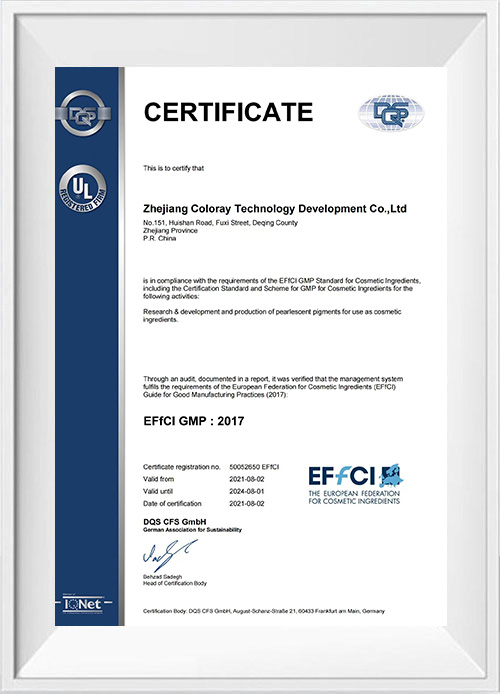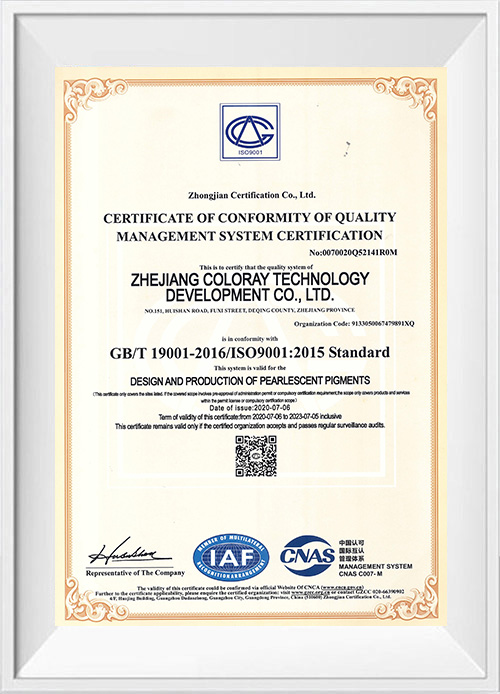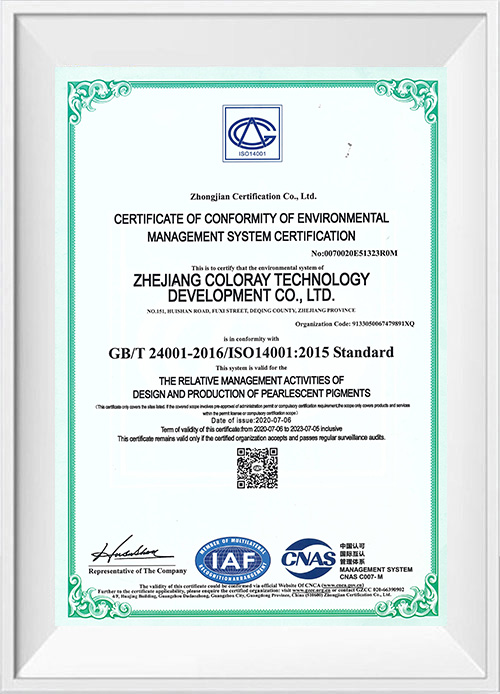What are the applications of crystal chameleon pigments in electronic products?
Crystal chameleon pigments are widely used in the field of electronic products due to their unique optical properties. Here are some specific application scenarios and potential uses:
The shells of mobile phones and smart devices are a popular area for the application of crystal chameleon pigments. This pigment can show different colors and glosses according to changes in light and angle, making the product stand out from many similar products. For example, some high-end mobile phone brands have adopted this pigment to make limited edition or special edition mobile phones to attract consumers' attention.
The shells of laptops and tablets can also use crystal chameleon pigments to provide users with personalized choices. This pigment can not only enhance the appearance of the product, but also increase the market competitiveness of the product.
Wearable devices such as smart watches and health monitoring bracelets are another area where crystal chameleon pigments are applied. These devices usually need to be in direct contact with the user's skin, so the use of this pigment can provide a more attractive appearance without causing skin allergies.
Electronic accessories such as headphones, chargers, and mobile power supplies can also use crystal chameleon pigments. This can not only enhance the beauty of the product, but also serve as part of brand recognition to enhance the market appeal of the product.
Game consoles, game controllers, virtual reality (VR) headsets and other gaming devices can also use crystal chameleon pigments to provide a more vivid and attractive appearance. The dynamic color effects of this pigment can enhance the immersion of the game.
As consumers' demand for personalized products grows, crystal chameleon pigments provide new possibilities for the personalization of electronic products. Users can choose different color change effects according to their preferences, making each product unique.
Certain electronic products, such as interactive displays or smart mirrors, can use crystal chameleon pigments to provide a richer visual experience. This pigment can change color according to the user's interactive behavior, increasing the interactivity and fun of the product.
In some electronic products that require special identification, such as electronic toys used by children or medical devices, crystal chameleon pigments can be used to improve product safety. For example, when the device overheats or malfunctions, the pigment can change color to alert the user.
Certain electronic products can integrate environmental monitoring functions, such as monitoring indoor temperature or humidity. Crystal chameleon pigments can change color according to environmental changes, providing users with intuitive environmental information.
In the field of education, crystal chameleon pigments can be used to demonstrate physical phenomena such as refraction, reflection and interference of light. In addition, exhibition venues such as museums and science and technology museums can also use this pigment to attract the audience's attention.
Artists and designers can use crystal chameleon pigments to create unique electronic products, such as art installations or conceptual products. The dynamic color effects of this pigment can bring new inspiration and creativity to the design.
With the development of technology, the application of crystal chameleon pigments in the field of electronic products will be more extensive. For example, combined with flexible display technology, future electronic products may adopt this pigment to achieve a more flexible and dynamic display effect.
What are the advantages of using crystal chameleon pigments in the field of electronic products?
The application of crystal chameleon pigments in the field of electronic products brings a series of advantages, which not only enhance the appearance of the product, but also enhance the user experience and market competitiveness. Here are some of the main advantages of crystal chameleon pigments in the application of electronic products:
Crystal chameleon pigments can show different colors and glosses according to changes in light and viewing angles. This unique visual effect makes electronic products more eye-catching among many similar products.
Consumers have a growing demand for personalized products, and the use of crystal chameleon pigments provides the possibility of personalized customization for electronic products. Users can choose color changes according to their preferences to get a unique product.
Electronic products using crystal chameleon pigments can show the brand's innovative ability and pursuit of aesthetics, which helps to enhance the brand image and market awareness.
In the highly competitive electronic product market, the application of crystal chameleon pigments provides products with a unique selling point, which helps to differentiate products in the market and attract consumers' attention.
Due to the uniqueness and innovation of crystal chameleon pigments, products using this pigment can often be sold at a higher price, thereby increasing the added value and profit margin of the product.
The dynamic color changes of crystal chameleon pigments can bring novel and pleasant experiences to users, and increase the interactivity and emotional connection between users and products.
Crystal chameleon pigments can automatically adjust colors according to changes in ambient light, which allows electronic products to maintain good visual effects in different usage environments.
Some types of crystal chameleon pigments are designed with safety in mind. For example, they can change color under certain conditions to remind users to pay attention to safety, such as changing color in high temperature environments to warn of overheating.
High-quality crystal chameleon pigments have good durability and chemical stability, and can maintain long-lasting and stable colors throughout the service life of electronic products.
With the increase in environmental awareness, many electronic product manufacturers have begun to seek environmentally friendly materials and processes. Crystal chameleon pigments can be a green choice for electronic products if they use environmentally friendly formulas and production processes.
In the electronic product market, products with unique designs and functions often gain stronger market competitiveness. The application of crystal chameleon pigments provides manufacturers with a means to enhance product competitiveness.
By providing a unique product experience, crystal chameleon pigments help to establish and maintain consumer brand loyalty.

























































